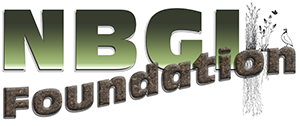Friday, June 8 — I heard 14 quail on my quail route this morning, 5 at one stop. I had a landowner call me on my way back to the office to say, “Marc – I heard 18 different quail this morning on my property.” He did 325 acres of long-leaf pine last year… I like days like this.
I want to state unequivocally, I fully support the National Bobwhite Conservation Initiative’s vision, goals and strategies for recovering quail across a landscape. I suspect they are glad to hear that…since I will become chair of the National Bobwhite Technical Committee in August, as current Chair Dan Figert moves on to the past-chair’s position, and we elect a new victim (I mean person) to fill my current vice-chair role.
The NBCI in a nutshell is built around focusing (concentrating) habitat work enough to make a difference on a landscape scale, to document that work, monitor quail population response in those areas, and promote successes at every opportunity. And this is the only way we will recover quail across their range. Success begets success.
You may hear references from time to time that the old “shotgun approach” didn’t work. The shotgun approach meant that there were no habitat targeting efforts at all. States and NGOs simply ran helter-skelter from one end of a state to the other and worked with folks where ever they could get a project on the ground. A lot of effort went into widely scattered projects that had no chance of impacting quail populations. While some individual landowners had success, when measured at a meaningful scale, the efforts made no difference in the quail populations.
New efforts revolve around indentifying counties, and within those, even more concentrated sections within which numerous landowners are encouraged to implement habitat projects. Rather than having 100 small projects scattered like a shotgun pattern across a whole state, envision a 100 well aimed rifle shots of habitat, poured into one section of a county.
Let’s look at an area of 10 square miles, or 6,400 acres. That would be 2 miles wide by 5 miles long within a prime portion of a focus county. Within that area, a team of locally led landowners, using cost-share programs, seed from NGOs and their own time and resources band together to form what Virginia dubs a “quail quilt” – numerous properties “sewn” or “stitched” together to form a habitat quilt for quail … not to mention all the other species that benefit.
Let’s say within that 6,400 acre area, 10% to 20% of it is quail cover. That is between 640 and 1,280 acres of quail habitat well distributed throughout the 6,400 acres. Key point here – not all 6,400 acres has to be quail habitat. These habitats can be in the form of field borders, idle crop fields, young cut-over timber lands, thinned and burned pine stands, and more. And these habitat patches can range in size from several hundred acres, down to patches of even a few acres. Yes – it takes large and small pieces of fabric to make a “patchwork quilt.”
“Wait a minute” you say, “I heard a biologist last week say that if we did not have 2,000 acres of land, we might as well forget about managing for quail.” Well, it may be true in a pure sense that it takes about 2,000 acres of landscape, with a pretty high percentage of quail cover within it, to support a quail population indefinitely. But those 2,000 acres don’t have to be in one ownership. In some cases 5, 10 or even 15 landowners might be involved in a focus area and even a sizeable chunk of public land. Each landowner benefits from what the others do, and not all have to have large landholdings to contribute.
“Yeah, sure, sounds good, but what if I don’t fall in a focus area?”
That’s a valid question. You can do one of several things:
a) do nothing and continue to complain about there being no quail,
b) say to yourself “To heck with the government, we know they don’t have enough money to make the whole state a focus area, but we have a brain, skills and resources of our own. We’ll sew our own quail quilt”, or
c) manage that habitat, however small it may be, because it has value to many critters even if quail don’t end up making it their home. And every now and then your habitat patch just might be the life preserver that gets a bobwhite through one more day, while on his way to the next focus area. Whether you own 10 acres or 10,000 acres, there’s a place for you on our quail team.
In future posts I will include specifics about how landowners can manage for quail on a variety of properties.







